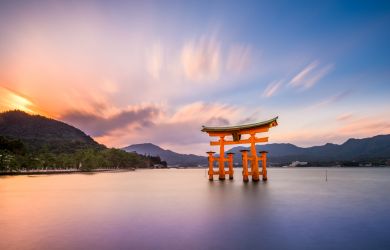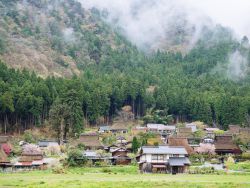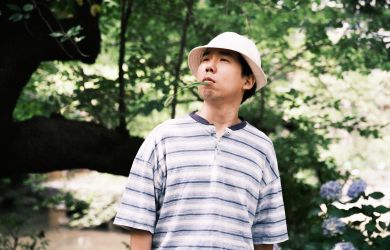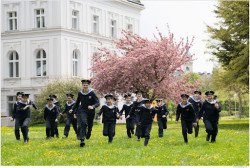
March 24, 2011
The Restless City
Through earthquakes, fires and war, Tokyo’s strong suit is the ability to reinvent itself
By Metropolis
Originally published on metropolis.co.jp on March 2011
 When the shockwaves from the Great Eastern Japan Earthquake struck Tokyo at 2:46pm on Friday, March 11, it seemed for a moment as if the city was in for one of its famous “wiping-the-slate-clean” moments. These have happened in the past, each time the city being largely destroyed but then rebuilt in a remarkably short time.
When the shockwaves from the Great Eastern Japan Earthquake struck Tokyo at 2:46pm on Friday, March 11, it seemed for a moment as if the city was in for one of its famous “wiping-the-slate-clean” moments. These have happened in the past, each time the city being largely destroyed but then rebuilt in a remarkably short time.
For example, in 1657, the Great Fire of Meireki destroyed about 70 percent of Edo, as it was then known, and took an estimated 100,000 lives, but within two years the city had largely been rebuilt and improved. Similar efforts occurred with the Ansei Edo earthquake of 1855, the Great Kanto Earthquake of 1923, and the firebombing of Tokyo in 1945. Each time the city, like some great urban phoenix, shrugged off untold death and destruction to enjoy a new lease of life.
In the latest crisis, Tokyo was spared such a cataclysmic cycle. The quake and its aftermath greatly disrupted life in the city, with the cancelation of hundreds of events, but the crisis has also reminded us what an exceptional city Tokyo is. Placed by its history between the twin poles of annihilation and explosive growth, and with past cataclysms encoded in its DNA, Tokyo is forever vibrantly renewing itself, area by area, block by block.
The kind of vitality that can rebuild a metropolis from a scorched wasteland ensures that the city is eternally on the move, with neighborhoods rising and falling, or changing their function, character and image. Driven by the economic imperatives of soaring real estate prices, formerly low-rent areas like Odaiba and Shinagawa have been turned into nests of skyscrapers. But a more interesting phenomenon in recent years has been the rise in rebranding of well-known neighborhoods with bad reputations.
The pattern was set with the redevelopment of Akihabara, once Tokyo’s geek ghetto. As part of “Tokyo Plan 2000,” the Tokyo Metropolitan Government released “Urban Development Guidelines for the Akihabara Area,” which stated its intention “to create a global center for the IT industry.” In effect, this meant attacking the local otaku culture.
Police crackdowns on various aspects of that culture soon followed, with the full weight of the law brought to bear on illegally copied CDs and DVDs, underage porn and unlicensed street cosplay performances—all things which had been more or less tolerated previously. A couple of years later a cluster of IT-related glass and steel skyscrapers near the JR East train station were unveiled, including Akihabara Dai Building and Akihabara DX, plus a new express railway connection to Tsukuba Science City. Akihabara had changed from a cozy but weird geek retreat with a distinct subculture into the kind of place mom and kids could accompany dad to buy his new laptop. One well-known otaku, A-boy Takuya, expressed the mood of the time.
“[I]f more and more other people start coming here, it will be difficult for us otaku to remain. This has been our gathering spot because we’re not accepted elsewhere.”
The success of Akihabara’s image re-launch stemmed from using elements that were already there—a connection with high-tech, computers and electronics—to spin a more widely acceptable image.
This approach was also used in Okubo, a neighborhood to the north of Shinjuku that was once a notorious mixture of love hotels, Iranian drug dealers, and an international bevy of streetwalkers from such exotic locales as Colombia, Venezuela and Thailand. Back in the mid-’90s, journalist, playwright and local resident Monty DiPietro counted 50 girls waiting for clients on the 500-meter-long thoroughfare that runs from Nishi-Okubo Park to the gray concrete wall that supports the JR Chuo line.
But unlike Akihabara, which underwent a renaissance by becoming a blander and more upmarket version of its previous incarnation, Okubo has substituted one colorful image for another.
After the pushers and prostitutes had been chased out with aggressive sweeps by police and undercover immigration officials, the area languished in relative obscurity. However, in recent years it has been successfully reinvented by building on its Korean heritage and tying this into the Korean Boom that has seen a massive surge in popularity for all Korean food and culture.
Now, alongside the Korean restaurants, visitors will find shops selling all manner of goods related to popular Korean celebrities, trawled by long lines of obasan or giggling groups of schoolgirls. Although the area continues to have its ups and downs, it has clearly come a long way from its far shadier past.
Perhaps the best example of area rebranding is one that is still ongoing and is much more extensive. This involves the popular gaijin hangout of Roppongi. In contrast to Okubo’s makeover, Roppongi’s revitalization has been accomplished by taking a more high-brow approach. Once the sort of place that could give Kabukicho a run for its money in the sleaze department, the neighborhood has been on the rise since the opening of Roppongi Hills in 2003. Since then, several additional high-profile developments have given it a more diverse economic base and a decidedly upmarket image.
Art has been essential in all this. Roppongi Hills’ centerpiece, the Mori Art Museum, was followed in 2007 by a pair of major new art venues: the stand-alone National Art Center, Tokyo (the final masterpiece of architect Kisho Kurokawa), the new Suntory Museum of Art and 21_21 Design Site. The latter two were part of the giant Midtown development.
The neighborhood’s ongoing “artification” was interrupted by the Great Eastern Japan Earthquake when Roppongi Art Night, originally scheduled for this weekend, was canceled. This all-night festival, held at the end of March to coincide with the blossoming of the cherry trees, began in 2009 and is designed to set the seal on Roppongi’s new image. This year’s event was to feature a giant inflatable sculpture by Yayoi Kusama, the grand old lady of Japanese avant-garde art, whose work, ironically, was meant to suggest a more positive attitude in a Japan beset with notions of stagnation and decline.
Despite the cancellation of this year’s event, RAN is a clear challenge to preconceptions that Roppongi is just about clubs and bars. Before the earthquake struck, Metropolis talked to the event’s director, Fumio Nanjo, about how the area’s image had changed.
“Roppongi has become not only a town for the night but also for the day,” Nanjo explained. “Now we have businesses of the daytime, like light cafés, galleries and museums. Yes, we have drinking places and bars, but we also have [a variety of other venues], so Roppongi has become a 24-hour city. You can enjoy it with family and friends, and it’s not just drunk guys making trouble. Roppongi Art Night symbolizes this change.”
Within Tokyo’s well-stocked spectrum of art institutions, Roppongi has positioned itself as an artistic center that welcomes a younger demographic. As with Akihabara and Okubo, this builds on the area’s existing characteristics, namely its attraction for the younger generation. But in place of clubbing, drugs and sexual promiscuity, what is now on offer is avant-garde art with the reassurance that there won’t be too many old people around as there are at other Tokyo art venues—hence the Mori’s late closing time of 10pm.
“If it’s traditional Japanese art, of course there are many old people,” Nanjo says. “If it’s Impressionism, it’s mainly ladies. If we design the contents for young people, young people will come. But I don’t know if it’s only for young people, because if older people want to stay they can stay, but usually they want to sleep.”
Whether the forces involved are the sudden, destructive ones of fire, earthquakes and war, or the more gradual ones of politics, economics and the desire to edge away from a disreputable past, one thing is certain: Tokyo is a city that never sits still.
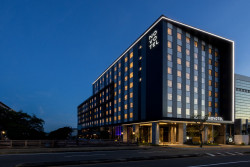
-390x250.jpg)
